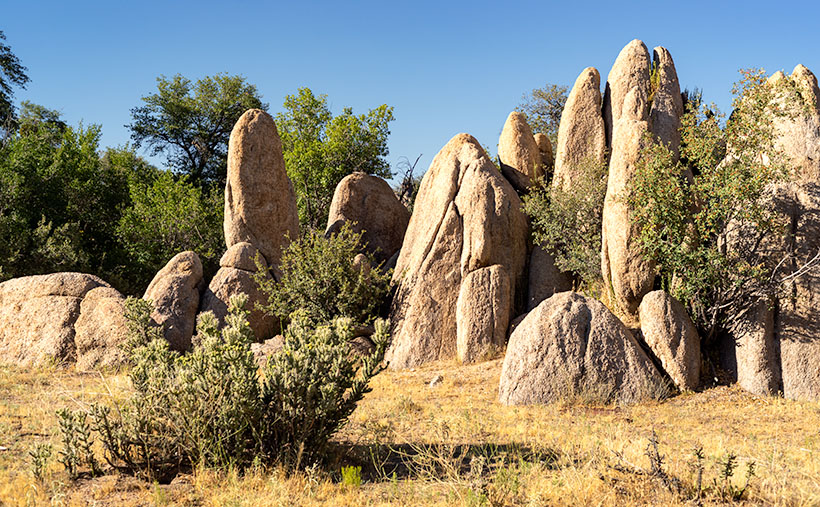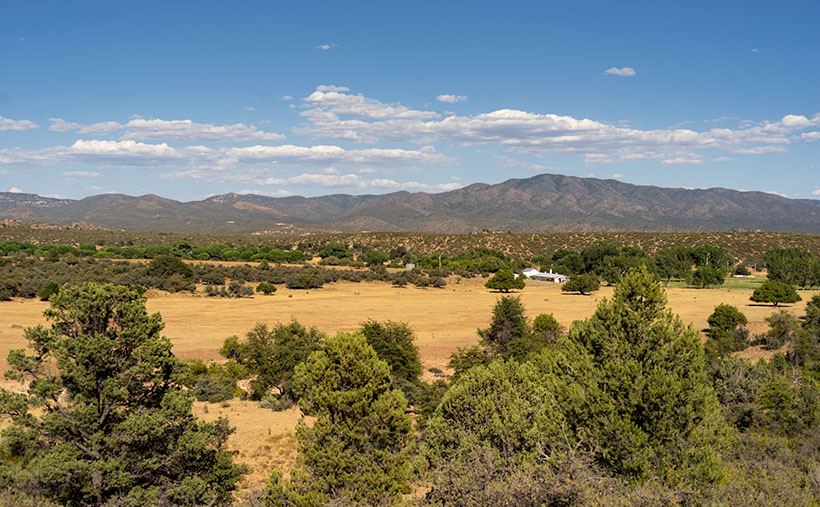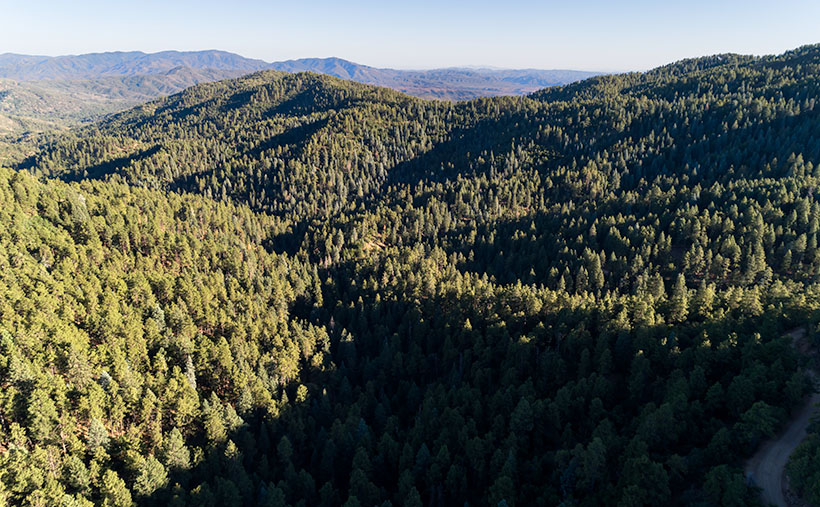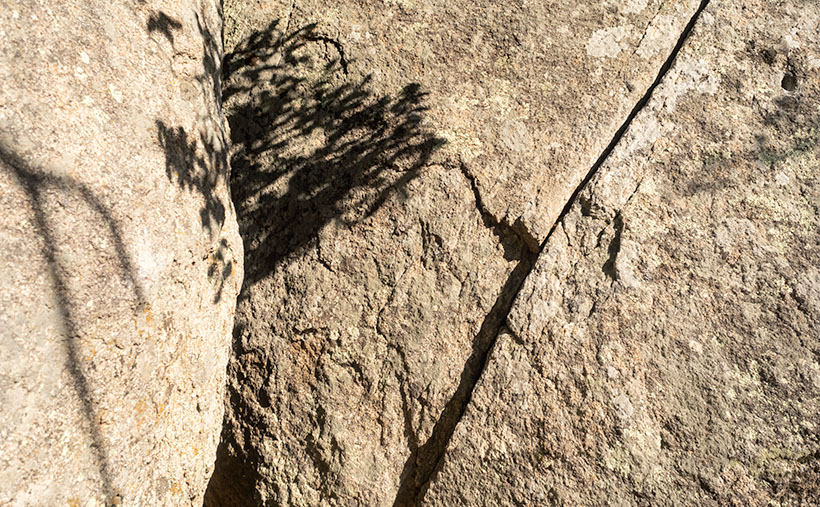The Queen and I went to the big city for provisions last week. We don’t get to town that often these days. We usually drive to a Costco or Lowe’s at the edge of the Phoenix suburbs, do our shopping, and then immediately get out of Dodge. Because the pandemic had us cooped up in the house for several months, we took advantage of the summer hotel prices and had a mini-vacation. I even brought my camera to take some tourist shots. That was a waste of time.
I often write about the quality of light in my posts, and during our visit, the atmosphere in Phoenix was the antithesis of light quality. With a combination of record-breaking heat, high humidity, high ozone levels, and residual forest fire smoke, it was like walking on Venus (OK, maybe that’s an exaggeration). Of the sky we could see, it was more milk than blue, and there wasn’t any cloud definition. The sky was a homogeneous white, but 100 degrees hotter than you’d experience in an Arctic blizzard white-out.
Those kinds of hot-foggy conditions not only mute the colors, but they strip your ambition to do anything outside, so I packed my camera away. We wound up buying some wine to pack into the refrigerator, turned down the air conditioning to 68º, and watched HGTV all day before switching to the Food channel in the evening. What a vacation. We were relieved to arrive home where at least we could pick out the blue sky between the clouds.
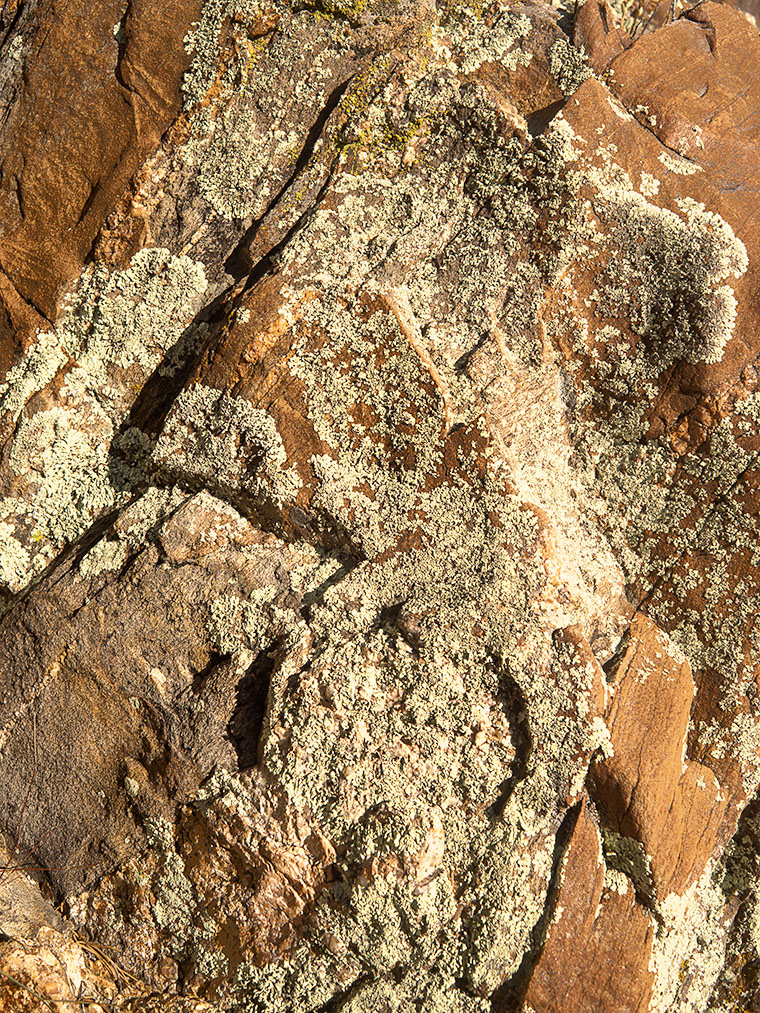
That brings me to the subject of this week’s featured image; lichen. When we lived in town, we bought several landscape boulders to decorate our yard, and I tried to pick out specimens that had lichen on them. Unfortunately, the smog is toxic to the fungus. It quickly dies, leaving no trace of its existence.
On our Ferguson Valley visit, I initially stopped for a different reason. As the dirt road passed through a wash, there was a rock formation—much like last week’s rocks—that had been eroded and fractured, like a single broken tooth remaining in a jawbone. But, as I worked the stone, I wasn’t getting a composition that made me happy. As I walked around the structure, I saw some large patches of green lichen, and that pleased me. I call this week’s photo Ferguson Valley Lichen.
You can see a larger version of Ferguson Valley Lichen on its Web Page by clicking here. Be sure to come back next week for the last stop on our Ferguson Valley tour.
Until next time — jw

